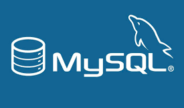IT SERVICES!
ADMINS24
ADMINS24 LIMITED is your trusted partner in server management, with over 10 years of experience to bring to your table. We believe in providing the best server infrastructure services, where we are very concerned about the reliability, security, and uptime of our customers’ servers. While browsing our website you’ll find numerous reasons why joining forces with ADMINS24 is a smart decision to solve all your server administration woes.
SECURE YOUR SERVER:
Experience the Pinnacle of Server Administration
Feature 01
At ADMINS24, we prioritize adaptive defense in our security systems. Through the utilization of machine learning technology, we are able to continuously analyze real-time traffic behavior. This proactive approach enables us to dynamically adapt and predict potential threats, ensuring they are promptly blocked before any harm occurs.
Feature 02
ADMINS24 offers a unified server dashboard that provides users with a comprehensive overview of all their server metrics, performance indicators, and system health checks. This centralized management dashboard makes monitoring and managing servers a seamless experience.
Feature 03
Personal Concierge Service: At ADMINS24, we provide a dedicated personal consultant to every client. Our consultants are available 24/7 to assist with any technical inquiries, optimize server settings, and ensure the best management practices for your business.
WHAT TO KNOW
More Features
At ADMINS24, we provide a comprehensive range of services to meet all your Linux server requirements. Our goal is to ensure that your servers perform at their best, with optimal reliability and security.
We take pride in providing personalized services that are specifically tailored to meet the unique needs of each client. This reflects our commitment to delivering excellence and ensuring complete client satisfaction.
Subscription service
basic
$50
Essential Coverage: ADMINS24’s Basic package offers business hours support, ensuring your server and website run smoothly. With a dedicated response within 1 hour and essential software installations, we prioritize your online presence.
standard
$75
Enhanced Response: Step up to our Standard plan for a quicker, 45-minute response and monitoring of up to 3 websites. We focus on server optimization and provide specialized consultations to enhance your server’s performance.
premium
$150
Round-The-Clock Care: Premium means 24/7 support and a swift 30-minute response time. We emphasize security, server optimization, and offer extensive server and website monitoring, ensuring peak performance at all hours.
VIP
$300
Ultimate Assurance: Our VIP tier promises unmatched service with priority response, comprehensive server monitoring, and personalized support. It’s more than a service; it’s a partnership for optimal performance and security.
For reliable and efficient administration and DevOps services, ADMINS24 is the right solution. Imagine you are a time-pressed entrepreneur or IT professional who must ensure uninterruptable server management and efficient DevOps practices. ADMINS24 has a team of professional experts who are able to provide seamless server operations, automation, and monitoring and will take care of that, so you can focus on your core duties. ADMINS24’s Linux and DevOps administration services cater to businesses of all sizes, from SMB to enters, with the skill, dependability, and ease of use they require to excel in the ever-changing This review will give all the details about ADMINS24 for Linux and DevOps administration needs.
Yurii K. / ADMINS24 LIMITED Founder
Linux Software Installation
There are multiple ways to install software on Linux, depending on your preferences and needs. The most common approach is using built-in package managers like 'apt', 'yum', or 'dnf'. These package managers allow for easy installation, updating, and removal of software packages through simple commands.
Another option is compiling software from source code, which offers more customization options. This method comes in handy when the desired software is not available in the distribution's repositories. However, it requires a certain level of technical expertise and can be more complex.
Regardless of the method you choose, Linux software installation provides great flexibility to cater to different user requirements and preferences.
Installation linux OS
When it comes to installing the Linux operating system on your server, opting for professional installation ensures a reliable and efficient setup.
Control panel Installation
Linux Server Control Panel Installation Service: Professional, Fast, and Efficient
LAMP installation
ADMINS24 offers a comprehensive service for installing the web server and database stack, which includes nginx, Apache, MySQL, and PHP.
iRedmail server installation
Our team provides a complete service that includes the installation and configuration of a mail server using iRedMail.
SwiftWeb Deploy
Introducing our new and advanced service: "SwiftWeb Deploy." This innovative solution is designed to enhance performance using OpenLiteSpeed (OLS)!
DNS server installation
We provide a service that can install and set up a DNS server using PowerDNS. This will help enhance the dependability and fault tolerance of your domain.

Linux Server Support
Comprehensive Linux Server Support is a service that offers complete assistance for the efficient operation, strong security, and ongoing maintenance of servers running on Linux. This all-inclusive package includes regular monitoring to detect potential threats, installation of necessary updates and patches, management of system backups, and troubleshooting performance issues. With a dedicated support team at their disposal, businesses can rely on continuous support to keep their Linux servers up-to-date, secure, and performing optimally. This unwavering commitment to support ultimately leads to increased productivity, minimized downtime, and overall improved business operations.
Linux software update
Updating Linux software involves upgrading individual applications or system components to newer versions. This helps improve functionality and addresses security vulnerabilities.
Linux distribution upgrade
Upgrade your Linux distribution with ADMINS24's seamless transition to the latest version. Experience improved performance and enhanced security features for your operating system.
Data migration
Data migration involves the transfer of data from one storage system, format, or computer system to another. The goal is to ensure that the data remains accessible and can be effectively utilized in its new environment.
Server optimization
Server optimization refers to the process of fine-tuning server settings and configurations to enhance performance, reduce latency, and ensure maximum resource efficiency.
Server monitoring
Server monitoring is the ongoing process of closely observing a server's performance, resources, and operations. Its main purpose is to ensure that the server operates efficiently and to identify any potential issues before they become serious problems.

IT security services
The security of sensitive information within an organization relies heavily on IT security services. These services include various measures such as firewalls, encryption, intrusion detection systems, and anti-virus software. Their purpose is to protect the organization's technological infrastructure from cyber threats and unauthorized access. Furthermore, these services ensure that the organization complies with industry regulations and standards, which helps maintain its reputation, prevent financial losses, and foster trust among clients and stakeholders.
Security audit service
A security audit service involves a thorough assessment of an organization's information systems and protocols. Its purpose is to identify any vulnerabilities and ensure that the organization is compliant with security standards. This helps protect against potential threats and breaches.
Backup solutions
Backup solutions offer a structured method for creating and storing data or system copies. This ensures that in case of data loss, system failures, or unexpected disruptions, information can be promptly and effectively restored.
VPN server setup
To establish a VPN server, you need to configure a secure and encrypted communication channel using either WireGuard or OpenVPN. This enables remote access and guarantees private and protected connectivity, even when utilizing public networks.
DDoS protection and CDN
ADMINS24 provides a comprehensive solution for protecting your website from distributed denial-of-service attacks (DDoS) and improving its performance. Our robust defense system, powered by Cloudflare, effectively safeguards against DDoS attacks. Additionally, our content delivery network enhances the speed and overall user experience of your website. With ADMINS24, you can enjoy both optimal security and improved performance for your online presence.
SSL certificate
An SSL certificate is a digital credential that helps protect sensitive information by encrypting and securing data transmitted between a user's browser and a web server. It ensures the authenticity of a website and guards against eavesdropping and potential cyber threats.

DevOps engineering services
DevOps engineering is a revolutionary approach that combines software development and IT operations into one cohesive unit. This collaborative culture fosters efficiency, automation, and rapid software delivery. By embracing DevOps engineering services, organizations can enhance their infrastructure's performance and reliability. This is accomplished through continuous integration, continuous delivery, and infrastructure as code principles. The outcome? More predictable results, fewer deployment failures, and quicker issue resolution when challenges arise.
Deployment automation
One important aspect of software development is setting up and customizing tools that automate the deployment of code on servers or cloud environments.
CI/CD pipeline configuration and monitoring
To optimize the development process, it's important to install and configure continuous integration and continuous delivery tools. This ensures a streamlined workflow for developers.
Configuration management
We offer comprehensive support for managing and optimizing cloud resources, leading to improved performance and cost-effectiveness. Our team of experts utilizes advanced tools to finely tune your cloud infrastructure based on your specific business needs and regulatory requirements.
Monitoring system setup
To effectively monitor the health and performance of applications and server systems, it is essential to install and configure monitoring tools like Zabbix or Grafana. These tools offer detailed insights and metrics that allow users to monitor and resolve any potential issues, ensuring optimal performance and reliability. By utilizing these advanced monitoring solutions, organizations can proactively identify and resolve problems, resulting in improved stability and efficiency of their infrastructure.
Cloud resource optimization
We specialize in helping businesses effectively manage and optimize their cloud resources, resulting in improved performance and cost-effectiveness. Our team is experienced in monitoring, analyzing, and optimizing resource allocation to ensure maximum utilization while minimizing expenses. You can trust us to streamline your cloud operations, driving optimal results for your business.
Cloud resource optimization
By leveraging Docker or Kubernetes, we can assist in creating and managing containers, ultimately streamlining the process of application development and deployment. This enhancement boosts productivity and effectiveness, leading to smooth and scalable development operations.

The technologies we use






ENHANCED SERVER ADMINISTRATION SERVICES
Meet the team
ADMINS24 is renowned for its Linux server administration services, thanks to the outstanding professionalism and relentless dedication to quality exhibited by the team. With their deep understanding and tireless efforts the company became a leader in market by defining its growth trajectory on an accelerated path. The ADMINS24 team constantly surprises its customers, providing solutions that meet and exceed expectations for every project they take on.
ADMINS24 LIMITED
You can reach out to us using the contact information provided, or through LiveChat
Address
Keurenplein 41 Unit E5539, 1069CD Amsterdam, Netherlands

